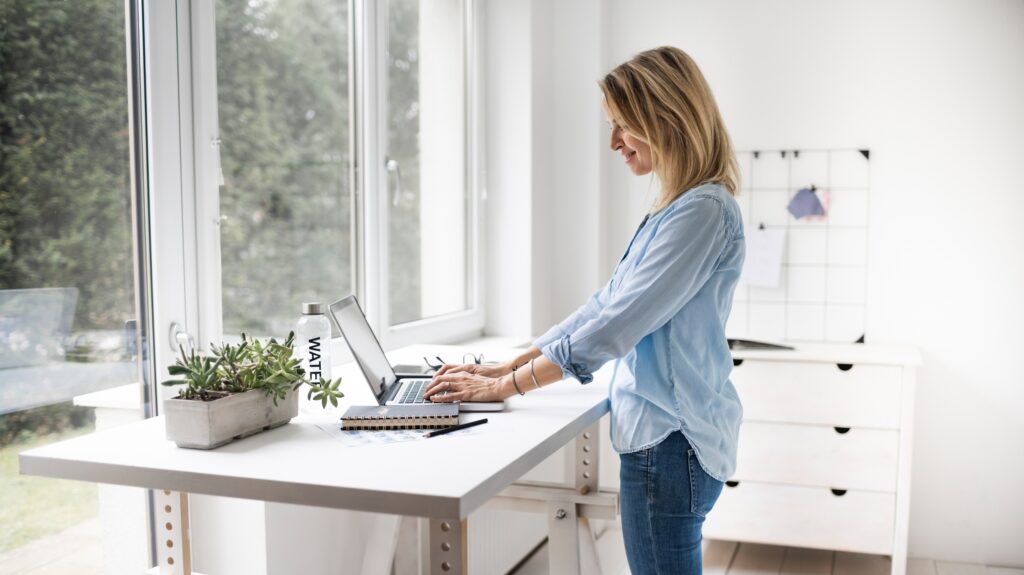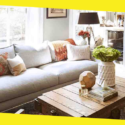What Sets Ergonomic Furniture Apart in the World of Interior Design and Comfort?

Interior design has come a long way over the years, driven by the desire to achieve a perfect balance between style and functionality.
The modern interior design landscape has seen a significant shift towards prioritising comfort and health, with ergonomic furniture becoming a key player.
This article delves into the unique features that set ergonomic pieces apart, marking a paradigm shift in how spaces are designed and furnished.
The advent of this type of furniture has revolutionised traditional concepts of comfort in both office and home settings. These pieces are specifically tailored to reduce physical strain and enhance user well-being, thus marrying functionality with comfort in a way that traditional furniture often overlooks.
Embracing Comfort and Health
Ergonomic pieces are designed with the human body in mind. They go beyond aesthetics, focusing on supporting the natural posture of the user. Chairs, desks, and other items are crafted to reduce discomfort and prevent the strain associated with prolonged sitting or standing. This focus on well-being is a testament to the evolving demands of contemporary living and working environments. The unique design of these pieces helps in maintaining proper posture, reducing the likelihood of developing chronic pain. They are particularly beneficial for individuals who spend extended periods seated, such as office workers. Moreover, the use of quality materials ensures durability and long-term comfort, making these pieces a smart investment for both health and productivity.
The Science Behind the Design
The creation of ergonomic pieces is not just an art; it’s backed by thorough research and ergonomics science. Designers study body mechanics and the interaction between the human body and furniture. The result is a product that not only looks good but also actively contributes to reducing the risk of musculoskeletal disorders, which are common in office settings. Extensive research goes into understanding the various pressure points and movements of the body, ensuring that each piece caters to these factors. This scientific approach results in innovative designs that are both functional and supportive. Ergonomic furniture is a culmination of biomechanics, psychology, and design, aiming to optimise comfort and minimise harm. These designs are continuously evolving, with ongoing research leading to even more refined and effective products.
Versatility in Functionality
One of the hallmarks of ergonomic design is its adaptability. These pieces often come with adjustable features such as height-adjustable chairs and desks, allowing users to customise their workspace according to their needs. This flexibility caters to a diverse range of body types and work styles, ensuring that comfort is not a one-size-fits-all solution. This versatility extends to various settings, be it a corporate office, a home study, or a creative studio. The ability to adjust and customise these pieces means they can suit different tasks and environments. They are also often designed to be easy to adjust, ensuring that changing positions or preferences can be accommodated quickly and effortlessly. This adaptability is crucial in the work culture, where flexibility and comfort are key to productivity.
Impact on Productivity and Morale
There’s a direct correlation between comfortable furniture and improved productivity. When individuals are free from the distractions of discomfort, they can focus better on their tasks. Moreover, investing in ergonomic solutions demonstrates a commitment to employee well-being, which can boost morale and job satisfaction. The psychological benefits of such an environment are significant; employees feel valued and cared for, which can lead to increased loyalty and lower turnover rates. A comfortable workspace also encourages creativity and reduces fatigue, further enhancing work quality. Employers who prioritise health-conscious office furnishings are likely to see a positive impact not only on individual performance but also on the overall organisational culture. This investment in employee health and comfort is a testament to a company’s values and its dedication to creating an optimal work environment.
Aesthetic Appeal with Function
While the primary focus of ergonomic design is on function, aesthetics are not compromised. These pieces blend seamlessly into various interior styles, from minimalist to contemporary. They offer a sleek and modern look, proving that functionality and style can coexist harmoniously. The designs are often sleek and streamlined, adding a touch of sophistication to any space. They are available in a variety of colours and materials, allowing for personalisation and alignment with existing décor. Designers have succeeded in creating pieces that are not only ergonomically beneficial but also visually appealing. This balance of style and practicality ensures that supportive furniture is not just a health choice but also a design statement, enhancing the visual appeal of any space they occupy.
Conclusion
Ergonomic furniture stands out as a fusion of comfort, health, and style in interior design. It represents a shift in priorities, where well-being is as important as aesthetics. This approach to furniture design not only enhances physical comfort but also contributes to overall health and productivity, making it a wise choice for both home and office environments. By embracing posture-centred furniture, individuals and businesses are not only investing in physical well-being but also in a more efficient, productive, and aesthetically pleasing environment. This trend signifies a deeper understanding and appreciation of the role of the physical environment in one’s daily life and overall health.
Recommended For You
Effective Ways to Upgrade Your Bedroom
Most Inside
Most Inside offers high-quality recommendations and valuable updates to enhance all aspects of your life, providing premium guidance and enriching experiences.




